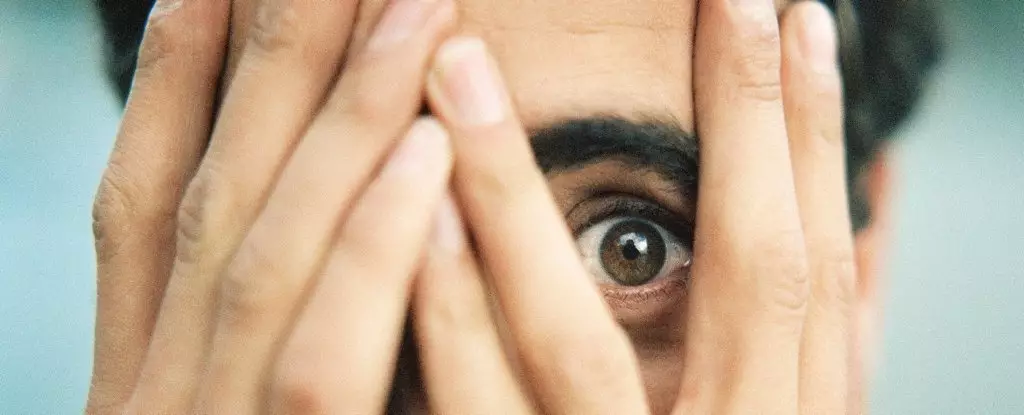In a world filled with constant stimuli, the phenomenon of misokinesia—a term that encapsulates the adverse reactions one might experience when witnessing others’ repetitive movements—has emerged as a compelling subject of study. Described as a “hatred of movements,” misokinesia can evoke feelings of distraction, annoyance, or even anguish in about one in three individuals. Despite this alarmingly high prevalence, systematic investigations into misokinesia have only recently begun to crystallize its underlying mechanisms and impacts on social interactions and individual well-being.
Research Findings on Misokinesia
Recent research, spearheaded by a team at the University of British Columbia, has shed light on this intriguing psychological phenomenon. In a landmark study, over 4,100 participants were surveyed to gauge their sensitivity to fidgeting behaviors. The findings revealed that approximately one-third of respondents reported varying degrees of discomfort in response to the visual stimuli associated with fidgeting. This discovery underlines that misokinesia is not merely an isolated issue but rather a broad social challenge that transcends clinical contexts and is experienced by a substantial segment of the general population.
The researchers associated misokinesia with other forms of sensory sensitivity, particularly misophonia, a condition where individuals become irate or agitated by certain repetitive sounds. However, they also noted that the two conditions are not inextricably linked; while both involve heightened sensitivity, the triggers for misokinesia are predominantly visual. This distinction opens the door for deeper explorations into how different sensory systems may interact and contribute to individual sensitivities.
The ramifications of misokinesia extend beyond mere irritation. Many individuals experiencing this phenomenon report significant emotional distress—encompassing feelings of anger, anxiety, and frustration. Such reactions can lead to diminished social enjoyment and even result in a withdrawal from social activities. This emotional toll suggests that misokinesia could have broader implications not only for individual mental health but also for workplace dynamics and educational environments.
Interestingly, the roots of misokinesia can often be traced back to personal experiences. For example, one of the researchers, Todd Handy, began investigating this phenomenon after a partner expressed distress over his fidgeting. This anecdote emphasizes the societal dimension of misokinesia—how one person’s fidgeting can create a ripple effect of discomfort and anxiety in others, triggering a cycle that may affect relationships and social interactions.
As researchers delve deeper into the cognitive foundations of misokinesia, questions about why fidgeting stirs such negative responses linger in the air. Early testing suggested that heightened visual-attentional sensitivities might explain the phenomenon. However, findings in this avenue were inconclusive, with no definitive evidence indicating that issues with visual attention were a primary factor.
One intriguing hypothesis revolves around the concept of “mirror neurons,” which activate both when we perform an action and when we observe others doing so. In the context of misokinesia, this could imply that individuals experiencing this sensitivity are unwittingly empathizing with anxious or nervous fidgeters. That shared anxiety could exacerbate discomfort, leading to a vicious cycle of heightened emotional responses.
Future Directions in Misokinesia Research
While researchers have begun to map the contours of misokinesia, more investigation is needed to fully understand its complex interplay with human emotions and social behaviors. Future research could explore additional dimensions like cultural variations in responses to fidgeting, potential physiological factors that contribute to heightened sensitivities, or broader implications for individuals in high-stress professions.
As we look toward more thoughtful approaches in understanding misokinesia, those grappling with its repercussions should be reassured. This hidden sensitivity is more common than anyone might have imagined, and recognizing its validity is the first step toward fostering greater sympathy and awareness in our increasingly fidget-prone world.
Misokinesia represents an intriguing and multifaceted psychological phenomenon that deserves more scrutiny. As we shed light on this hidden struggle, our increased awareness can serve to enhance understanding and empathy among individuals navigating the complexities of social interactions. It is clear that beyond the mere annoyance of fidgeting lies a deeper, shared human experience—one that speaks to our interconnectedness in the tapestry of human emotion. To those facing the emotional challenges posed by misokinesia, you are not alone; your experiences contribute to a broader narrative that invites understanding and dialogue.

